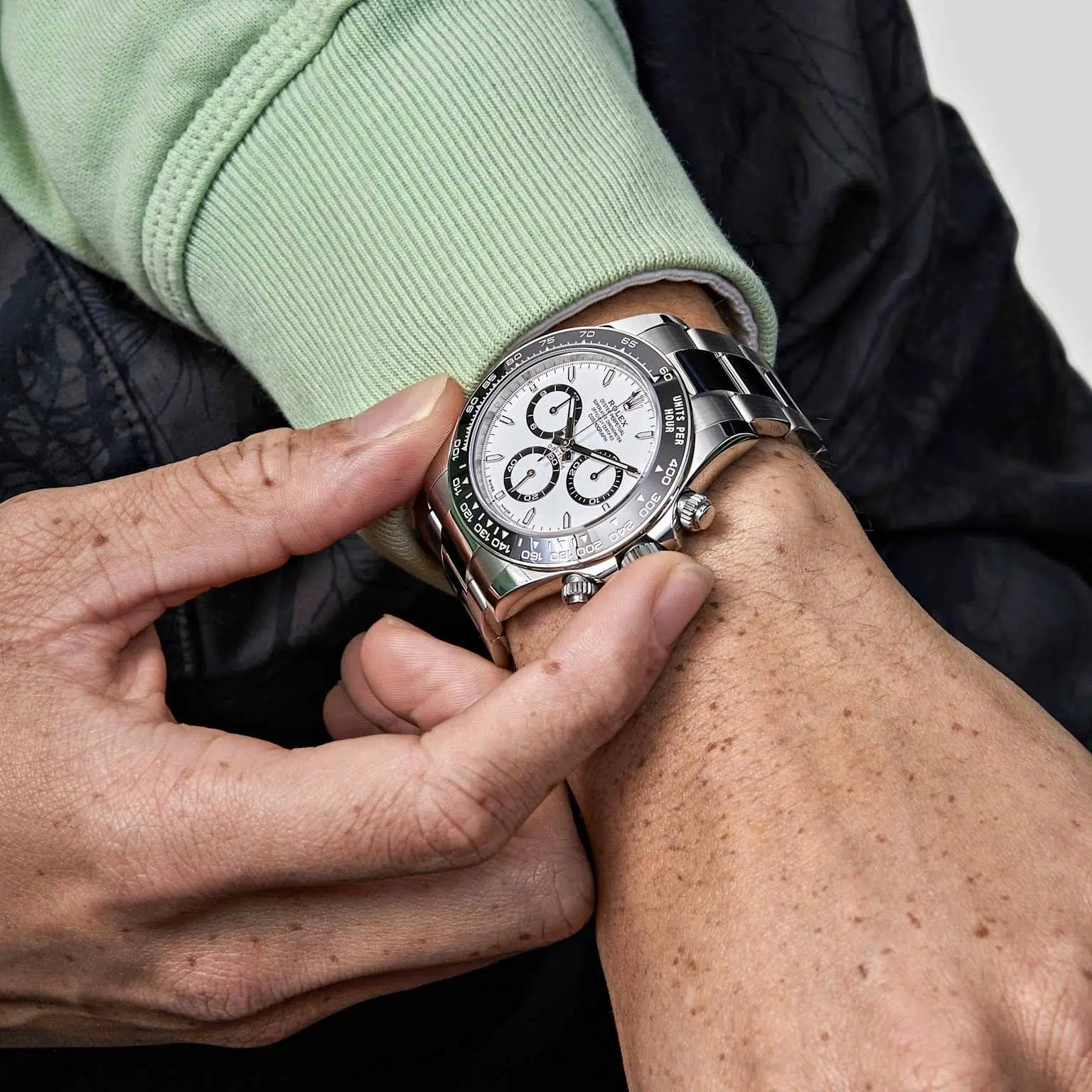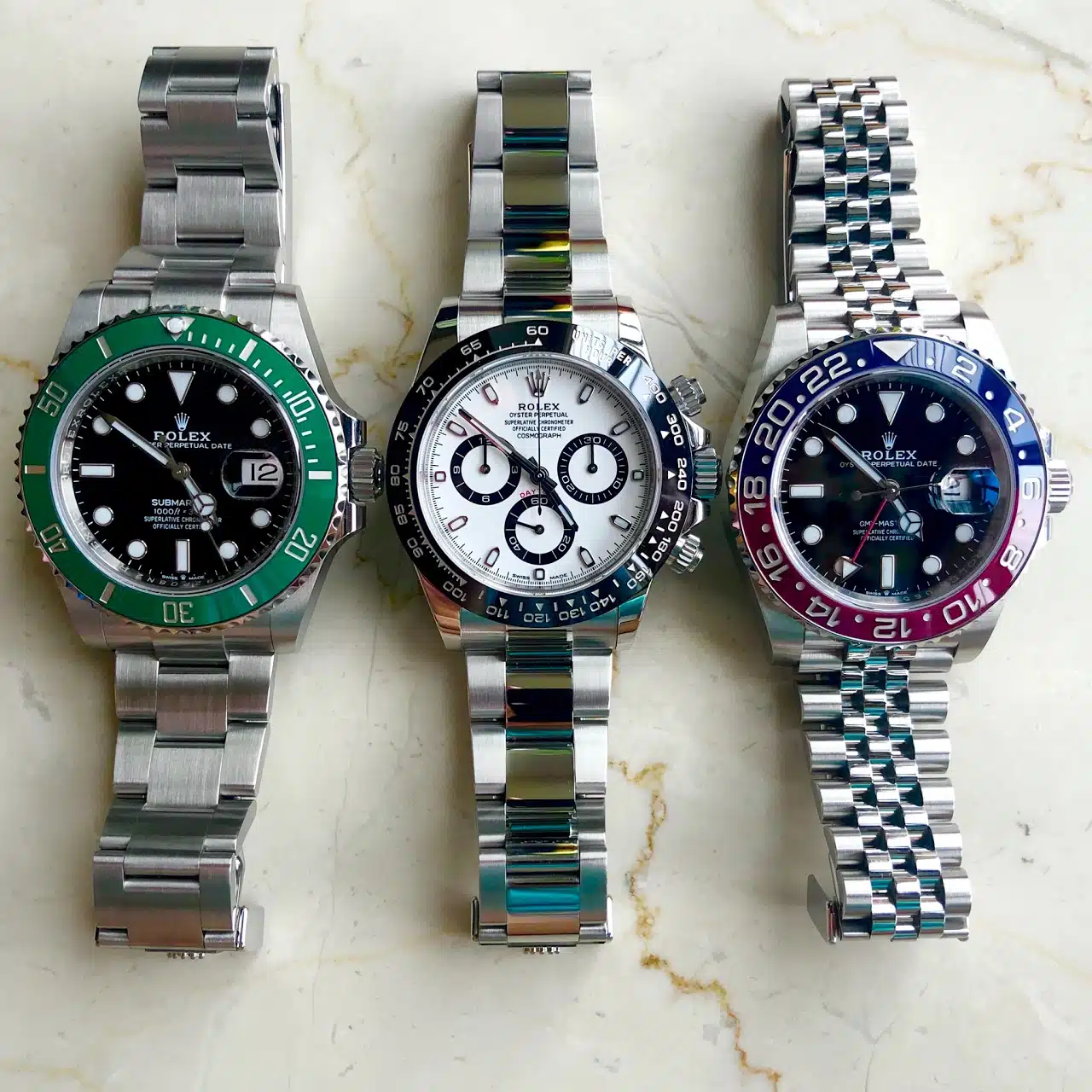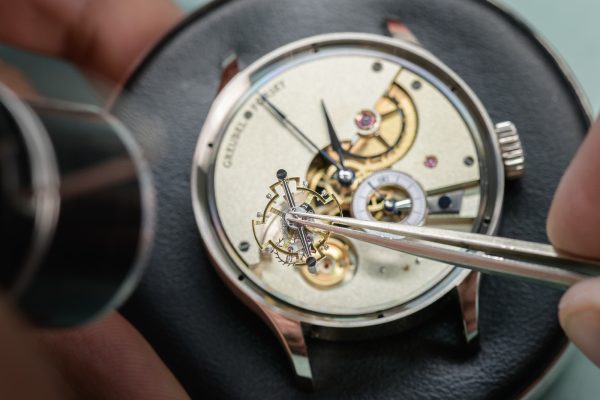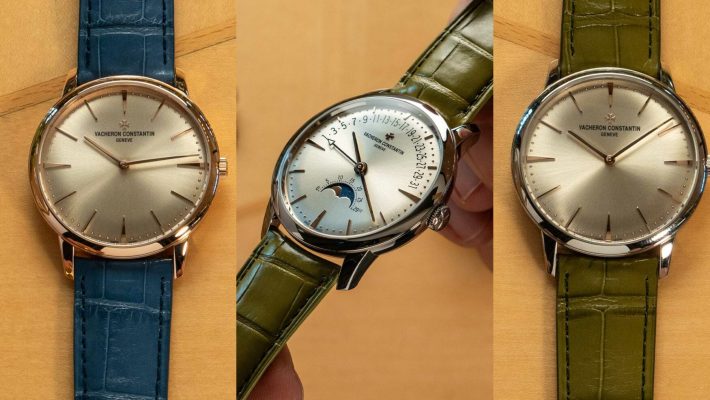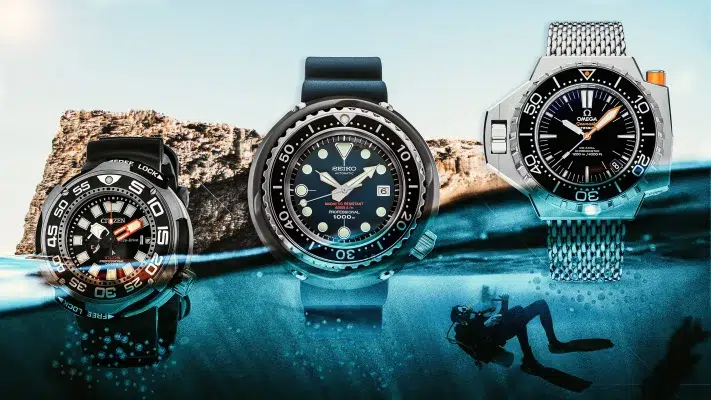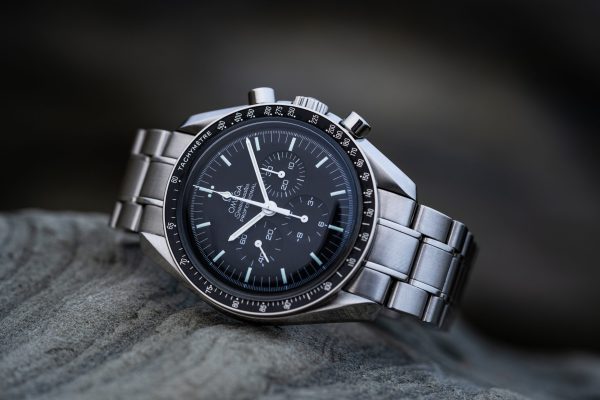AP, Blog, Patek Philippe
Patek Philippe Nautilus vs Audemars Piguet Royal Oak: Comparing Two Icons of Luxury Sports Watches
In the rarefied world of haute horlogerie, few debates spark as much passion as the eternal comparison between two masterpieces of luxury sports watchmaking: the Patek Philippe Nautilus and the Audemars Piguet Royal Oak. These timepieces transcend their fundamental purpose of marking time, ascending to the realm of cultural artifacts that embody decades of Swiss craftsmanship, design innovation, and collector devotion. Both born from the visionary mind of Gérald Genta, these watches represent not merely different approaches to luxury sports watchmaking, but distinct philosophies about what constitutes timeless elegance in an age of mechanical precision.
The Genesis of Two Legends: Historical Context and Design Philosophy
The Revolutionary Birth of the Royal Oak
The story begins in 1972, at a moment when the Swiss watch industry faced an existential crisis. The Quartz Crisis threatened to render mechanical timepieces obsolete, forcing traditional manufacturers to reconsider their entire approach to luxury watchmaking. In this climate of uncertainty, Audemars Piguet made a decision that would reshape the industry forever: they commissioned Gérald Genta to create something unprecedented—a luxury sports watch in stainless steel that would command prices previously reserved for precious metal dress watches.
The circumstances surrounding the Royal Oak’s creation have become legend in horological circles. According to documented accounts from Audemars Piguet’s archives, managing director Georges Golay approached Genta at 4 PM on the eve of the 1970 Basel Fair, requesting “a steel sports watch that has never been done before” by the following morning. Working through the night, Genta drew inspiration from a diving helmet’s octagonal shape and visible bolts, creating the distinctive bezel design that would define the Royal Oak’s aesthetic.
The resulting timepiece was revolutionary in every sense. Priced at 3,300 Swiss Francs—more expensive than a gold Patek Philippe dress watch of the time—the Royal Oak challenged conventional notions of luxury and value. Its integrated bracelet, hand-finished surfaces, and “Grande Tapisserie” dial represented a new category of timepiece that merged industrial robustness with haute horlogerie finishing.
The Nautilus: Patek Philippe’s Refined Response
Four years later, in 1976, Patek Philippe entered the luxury sports watch arena with their own interpretation of Genta’s vision. The Nautilus emerged from a similar moment of serendipity, with Genta reportedly sketching the initial concept on a napkin during a Basel restaurant encounter with Patek Philippe executives. However, by 1976, the luxury steel sports watch concept had already been proven by the Royal Oak’s growing success, allowing Patek Philippe to take a more refined approach.
The Nautilus drew its inspiration from ship portholes and Jules Verne’s “Twenty Thousand Leagues Under the Sea,” reflecting a nautical theme that extended to its original cork packaging. Where the Royal Oak embraced industrial boldness, the Nautilus pursued elegant understatement. Its rounded octagonal case, softer curves, and horizontal embossed dial created a more versatile aesthetic that could seamlessly transition between sporting and formal contexts.
Patek Philippe positioned the Nautilus with the bold advertising slogan “One of the world’s costliest watches is made of steel,” directly acknowledging the paradigm shift that luxury sports watches represented. This positioning reflected the brand’s confidence in applying their traditional standards of excellence to an entirely new category of timepiece.
Design Language and Aesthetic Philosophy
The Royal Oak: Architectural Modernism on the Wrist
The Royal Oak’s design philosophy can be understood as architectural modernism translated to horological form. Every element serves both functional and aesthetic purposes, creating a coherent design language that has remained virtually unchanged for over five decades. The octagonal bezel with its eight exposed hexagonal screws isn’t merely decorative—these elements secure the bezel to the case while creating the watch’s signature visual identity.

The integration between case and bracelet represents one of the Royal Oak’s most sophisticated achievements. Rather than simply attaching a bracelet to lugs, Genta created a seamless flow from case to bracelet that required complex manufacturing tolerances and finishing techniques. Each bracelet link receives individual attention, with alternating brushed and polished surfaces that create depth and visual interest under varying light conditions.
The “Grande Tapisserie” dial, achieved through rare guilloché machines, adds textural complexity that prevents the watch from appearing flat or monotonous. This pattern, combined with applied hour markers and hands with luminescent coating, ensures optimal legibility while maintaining the watch’s luxury credentials.
The Nautilus: Refined Minimalism and Elegant Restraint
Where the Royal Oak embraces complexity, the Nautilus pursues refined simplicity. Its design philosophy centers on creating maximum impact through minimal means—a approach that reflects Patek Philippe’s broader aesthetic sensibilities. The rounded octagonal bezel integrates seamlessly with the case, avoiding the visual punctuation of exposed screws in favor of flowing, organic lines.
The horizontally embossed dial creates subtle texture without overwhelming the watch’s essential clarity. This restraint extends to the integrated bracelet, which tapers more dramatically than the Royal Oak’s, creating a lighter visual presence on the wrist. The overall effect is one of sophisticated understatement—a watch that reveals its complexity gradually rather than announcing it immediately.
Patek Philippe’s approach to the Nautilus reflects their understanding that true luxury often lies in what is not shown rather than what is displayed. The watch’s porthole-inspired case construction creates structural integrity without visual weight, allowing the timepiece to maintain elegance across diverse wearing contexts.

Movement Excellence and Technical Innovation
Audemars Piguet’s Caliber Evolution: From 2121 to Modern Mastery
The Royal Oak’s mechanical heart has evolved significantly since its introduction, reflecting Audemars Piguet’s commitment to technical advancement while preserving the watch’s essential character. The original Caliber 2121, based on the Jaeger-LeCoultre 920, represented one of the thinnest automatic movements ever created, allowing the Royal Oak to maintain its sleek profile.
The recent introduction of Caliber 7121 for the 50th anniversary collection represents five years of intensive development by Audemars Piguet’s engineering team. This movement increases power reserve from 40 to 55 hours while maintaining the ultra-thin profile essential to the Royal Oak’s aesthetic. The new caliber incorporates modern engineering solutions including ball bearings for the rotor and a quick-set date function, addressing practical concerns while preserving traditional finishing standards.
Audemars Piguet’s approach to movement finishing reflects their commitment to visual excellence. Each component receives hand-finishing treatment, including polished bevels, circular graining, and the signature Côtes de Genève striping. The visible rotor, decorated specially for anniversary editions, serves as both functional component and aesthetic statement.
Patek Philippe’s Caliber Philosophy: Precision Through Tradition
Patek Philippe’s approach to movement development emphasizes evolutionary refinement over revolutionary change. The Nautilus has utilized several calibers throughout its production history, each representing incremental improvements in precision, reliability, and functionality.
The Caliber 324 S C, introduced in the early 2000s, exemplifies Patek Philippe’s philosophy of measured advancement. Operating at 28,800 vibrations per hour with a 45-hour power reserve, this movement incorporates the company’s Spiromax hairspring made from Silinvar—a silicon-based material that provides antimagnetic properties and temperature stability. The movement’s architecture prioritizes long-term reliability and precision over visual drama.
Patek Philippe’s transition from the Geneva Seal to their proprietary Patek Philippe Seal in 2009 reflected the company’s belief that their own standards exceeded those of traditional certification bodies. The Patek Philippe Seal encompasses not only movement finishing but also timing precision (-3/+2 seconds per day), service standards, and lifetime support—a holistic approach to quality that extends far beyond the movement itself.
The finishing standards applied to Patek Philippe movements emphasize functional beauty over decorative excess. While components receive traditional Geneva finishing techniques including anglage and perlage, the overall aesthetic remains purposeful and restrained. This approach reflects the brand’s philosophy that true excellence lies in the perfect execution of essential functions rather than superfluous ornamentation.
Comprehensive comparison of key specifications and characteristics between the Patek Philippe Nautilus and Audemars Piguet Royal Oak luxury sports watches
| Feature | Patek Philippe Nautilus | Audemars Piguet Royal Oak |
| Design Heritage | 1976, Genta design, ship portholes | 1972, Genta design, diving helmets |
| Case Shape | Rounded octagonal, softer curves | Sharp octagonal, angular lines |
| Bezel Design | Rounded octagonal, integrated | Octagonal, 8 exposed screws |
| Dial Pattern | Horizontal embossed lines | Grande Tapisserie guilloché |
| Case Diameter | 40mm (5711), 40.5mm (5712) | 39mm (15202), 41mm (15500) |
| Case Thickness | 8.3mm (5711) | 8.1mm (15202), 10.4mm (15500) |
| Movement | Caliber 26-330 S C, 45h reserve | Caliber 7121 (15202) or 4302 |
| Movement Finish | Patek Seal, Geneva finishing | Hand-finished, côtes de Genève |
| Water Resist | 120 meters | 50 meters |
| Retail Price | $35k– | $25k–$30k |
| Market Premium | 200–300% above retail | 50–100% above retail |
| Waiting List | 5–8 years (closed) | 1–3 years |
| Production | Very limited (~2k–3k total) | Higher (~15k–20k family) |
| Philosophy | Traditional excellence, discreet | Bold innovation, modern craft |
| Target Demo | Conservative collectors, old money | Modern enthusiasts, fashion |
Market Dynamics and Investment Considerations
The Nautilus Phenomenon: Scarcity and Desire
The Patek Philippe Nautilus occupies a unique position in the luxury watch market, where extreme scarcity has created unprecedented demand dynamics. With Patek Philippe’s total annual production capped at approximately 60,000 pieces across all collections, the Nautilus represents only a small fraction of the company’s output. This scarcity is not accidental but reflects Patek Philippe’s deliberate strategy of maintaining exclusivity through controlled production.

The waiting list for a Nautilus has become legendary in watch collecting circles, with estimates ranging from 5 to 8 years for new customers—assuming one can even secure a position on the list. Many authorized dealers have effectively closed their lists to new customers, prioritizing existing relationships and high-value clients. This situation has created a secondary market where Nautilus models routinely sell for 200-300% above retail prices.
The discontinuation of the steel Nautilus 5711 in 2021 sent shockwaves through the collecting community, driving prices to even more stratospheric levels. This decision, while shocking to many, reflected Patek Philippe’s commitment to managing their brand image and preventing the Nautilus from overshadowing their other collections. The move demonstrated the company’s willingness to sacrifice short-term revenue to maintain long-term brand positioning.
Royal Oak Market Position: Accessibility Within Exclusivity
The Audemars Piguet Royal Oak occupies a different market position, offering relatively greater accessibility while maintaining strong collector appeal. With Audemars Piguet producing approximately 15,000-20,000 Royal Oak family watches annually, the collection offers more opportunities for acquisition, though popular models still command waiting periods of 1-3 years.
Recent market dynamics have shown interesting shifts in Royal Oak availability. Reports suggest that waiting lists for certain Royal Oak models have decreased significantly, with some references available within weeks rather than years. This normalization reflects broader market corrections following the peak speculation period of 2021-2022.
The Royal Oak’s secondary market performance remains strong, with popular steel models trading at 50-100% premiums over retail prices. However, this premium is more moderate than the Nautilus, making the Royal Oak a more accessible entry point into the luxury sports watch market while still offering significant investment potential.
The Experience of Ownership: Comfort, Versatility, and Daily Life
Wearing Characteristics and Ergonomic Considerations
The daily wearing experience represents perhaps the most subjective yet crucial aspect of choosing between these two icons. The Nautilus has earned widespread praise for its exceptional comfort, with many collectors describing its bracelet as “silky” and “like a second skin” on the wrist. This comfort stems from the watch’s careful attention to ergonomics, including a bracelet design that tapers gracefully and distributes weight evenly across the wrist.
The Royal Oak’s wearing experience reflects its more architectural approach to design. The watch’s angular lines and larger case presence create a more substantial feel on the wrist, which some wearers prefer for its confident presence. The integrated bracelet, while visually striking, requires more careful sizing due to its complex link structure. However, modern Royal Oak models incorporate improved ergonomics that address earlier comfort concerns while maintaining the design’s essential character.
Weight distribution plays a crucial role in long-term wearing comfort. The Nautilus’s slightly smaller case and refined bracelet design create a lighter overall presence, making it suitable for extended wear in various contexts. The Royal Oak’s more substantial construction provides a different wearing experience—one that announces its presence more definitively but may feel more intrusive in certain situations.
Versatility Across Social and Professional Contexts
Both watches were designed as “go anywhere, do anything” timepieces, but they achieve this versatility through different approaches. The Nautilus’s refined aesthetics and subtle presence make it particularly suited to situations requiring discretion. Its ability to work equally well with formal attire and casual clothing reflects Patek Philippe’s understanding of their clientele’s diverse lifestyle requirements.
The Royal Oak’s bold design language makes it more of a statement piece, suitable for wearers who prefer their timepiece to serve as a conversation starter. Its architectural lines complement modern fashion sensibilities, making it particularly popular among younger collectors and those in creative industries.
Professional contexts often influence choice between these models. The Nautilus’s understated elegance aligns with traditional professional environments where discretion is valued, while the Royal Oak’s contemporary aesthetic resonates in industries that appreciate design innovation and boldness.
Cultural Significance and Brand Philosophy

Patek Philippe: The Eternal Approach to Luxury
Patek Philippe’s approach to the Nautilus reflects their broader philosophy of creating timepieces for “the next generation.” This perspective, embodied in their famous advertising slogan, influences every aspect of the watch’s development and positioning. The company views themselves as custodians of horological tradition, applying centuries of expertise to contemporary challenges.
The brand’s emphasis on discretion and understated excellence appeals to collectors who view their timepieces as private achievements rather than public displays. This philosophy attracts what sociologists term “old money” aesthetics—individuals who prefer quality and heritage over conspicuous display. The Nautilus becomes a subtle signal of discernment rather than a loud proclamation of wealth.
Audemars Piguet: Innovation Within Tradition
Audemars Piguet’s approach to the Royal Oak reflects their position as innovators within the traditional Swiss watchmaking framework. The company has consistently pushed boundaries while respecting horological heritage, creating timepieces that appeal to collectors seeking both innovation and authenticity.
The Royal Oak’s cultural significance extends beyond traditional watch circles, influencing fashion, design, and popular culture in ways that few timepieces achieve. This broader cultural relevance has attracted a more diverse collecting community, including younger enthusiasts and those from non-traditional luxury backgrounds.
The brand’s willingness to experiment with materials, complications, and variations within the Royal Oak family demonstrates their commitment to evolution while maintaining core design principles. This approach has created multiple entry points into the collection while preserving the original’s iconic status.

Collector Communities and Cultural Impact
The Social Dimension of Luxury Sports Watch Collecting
Both timepieces have fostered vibrant collector communities that extend far beyond simple ownership. The Nautilus attracts collectors who appreciate its connection to Patek Philippe’s broader heritage and its position as the pinnacle of sports watch achievement. These communities often emphasize knowledge, craftsmanship appreciation, and the emotional connections that develop between collector and timepiece.
Royal Oak collectors tend to form more diverse communities, united by appreciation for design innovation and contemporary relevance. The watch’s broader accessibility has created larger collector networks, with active online communities sharing modifications, discoveries, and market insights. The RedBar Group and similar organizations often feature significant Royal Oak representation, reflecting the watch’s appeal across different collector demographics.
Status Signaling and Cultural Capital
The choice between Nautilus and Royal Oak often reflects different approaches to status signaling and cultural capital. The Nautilus appeals to collectors who prefer what sociologists call “cultural capital”—the demonstration of knowledge, taste, and sophistication rather than mere financial capability. This approach aligns with traditional luxury consumption patterns where discretion and insider knowledge matter more than obvious display.
The Royal Oak, while certainly prestigious, operates in a more accessible luxury space where appreciation for design and craftsmanship can coexist with fashion consciousness and contemporary relevance. This positioning has made it particularly attractive to younger collectors and those who view their timepiece as part of a broader lifestyle statement.
Future Trajectories and Long-term Considerations
Investment Potential and Market Evolution
Both watches have demonstrated strong investment performance over their production histories, but with different risk and reward profiles. The Nautilus’s extreme scarcity and Patek Philippe’s controlled production suggest continued appreciation potential, particularly for references that achieve iconic status. However, this scarcity also creates volatility and accessibility challenges that may limit market participation.
The Royal Oak’s broader production and Audemars Piguet’s more expansive approach to the collection provide different investment dynamics. While individual pieces may not achieve the extreme premiums of the rarest Nautilus models, the collection’s overall strength and accessibility suggest more stable long-term performance.
Market analysts suggest that both watches will continue benefiting from the luxury goods sector’s expansion and the growing global appreciation for mechanical watchmaking. However, their different market positions may lead to divergent performance based on broader economic conditions and collector preferences.

Technological and Design Evolution
Both brands face the challenge of evolving their iconic designs while preserving their essential character. Patek Philippe’s approach to the Nautilus emphasizes refinement within established parameters, introducing technical improvements while maintaining aesthetic consistency. This conservative approach preserves the watch’s timeless appeal but may limit its relevance to future generations.
Audemars Piguet’s more experimental approach to the Royal Oak family suggests continued innovation in materials, complications, and variations. This strategy maintains contemporary relevance but risks diluting the original’s iconic status through over-extension.
Conclusion: The Art of Horological Choice
The decision between the Patek Philippe Nautilus and Audemars Piguet Royal Oak ultimately transcends technical specifications or market considerations, entering the realm of personal philosophy and aesthetic preference. These timepieces represent two distinct approaches to luxury sports watchmaking excellence, each valid within its own framework of values and priorities.
The Nautilus embodies the principle that true luxury lies in restraint—in the perfect execution of essential functions without unnecessary ornamentation or display. It appeals to collectors who view their timepiece as a private achievement, a connection to horological heritage, and a statement of sophisticated discernment. Its scarcity and Patek Philippe’s exclusivity policies ensure that ownership remains a rare privilege, but one that comes with the challenges of accessibility and market volatility.
The Royal Oak represents a different philosophy—one that embraces boldness, innovation, and contemporary relevance while respecting traditional craftsmanship. It attracts collectors who appreciate design innovation, cultural significance, and the ability to participate in a broader community of enthusiasts. Its relative accessibility and Audemars Piguet’s evolutionary approach to the collection provide multiple paths to ownership and appreciation.
Both watches succeed magnificently within their respective frameworks, offering experiences that justify their positions as icons of luxury sports watchmaking. The choice between them reveals as much about the collector as it does about the timepieces themselves—a preference for tradition versus innovation, discretion versus statement, exclusivity versus accessibility. In the end, both paths lead to the same destination: ownership of a masterpiece that represents the pinnacle of Swiss horological achievement, designed by the same visionary hand and crafted to standards that few manufactures can match. The fortune lies not in choosing one over the other, but in having the opportunity to appreciate both as monuments to human creativity and mechanical precision.
FAQ – Patek Philippe Nautilus vs Audemars Piguet Royal Oak
Both were designed by Gérald Genta, the legendary Swiss watch designer. The Audemars Piguet Royal Oak was released in 1972, while the Patek Philippe Nautilus followed in 1976.
The Royal Oak has a sharp octagonal bezel with 8 visible screws and a “Grande Tapisserie” dial. The Nautilus features a rounded octagonal bezel with no exposed screws and horizontal embossed lines for a cleaner look. The Royal Oak has a more industrial, architectural style, while the Nautilus is more elegant and understated.
The Nautilus is often considered more ergonomic due to its lighter weight and tapered bracelet. The Royal Oak feels more substantial on the wrist and may suit those who prefer a bold, heavier presence.
- Nautilus: Caliber 26-330 S C, 45-hour power reserve, Patek Philippe Seal, refined finishing.
- Royal Oak: Caliber 7121, 55-hour power reserve, hand-finished with Côtes de Genève.
- Water Resistance: 120m (Nautilus) vs 50m (Royal Oak)
The Nautilus is much harder to obtain, with long or closed waitlists and extremely limited production. It often sells for 200–300% above retail on the secondary market. The Royal Oak is easier to access, with more availability and resale premiums of 50–100%.
The Nautilus appeals to traditional collectors and those who value discretion and heritage (“old money”). The Royal Oak is favored by modern enthusiasts, creatives, and people who enjoy bold, iconic design.
Both offer strong investment potential. The Nautilus is more volatile but can offer higher upside due to scarcity. The Royal Oak offers broader access, stability, and brand longevity, especially in steel models.

